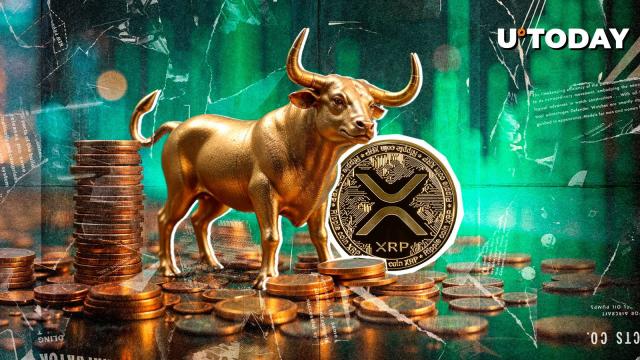Translated by | Asher
Editor's Note: This article analyzes the impact of recent changes in U.S. global tariff policies on financial markets, particularly Bitcoin's unique performance; discusses the long-term effects of tariffs on the economy, especially asset allocation during stagflation, and the performance of Bitcoin and gold in such an environment; examines the impact of current trade tensions on the U.S. dollar and potential Bitcoin adoption, and finally provides an outlook on the economic prospects for the coming years, suggesting that Bitcoin and scarce commodities like gold may receive more attention and demand in a high-inflation environment.
Since the U.S. announced new global tariff policies on April 2, global asset prices have fallen sharply, only gradually recovering after Trump's announcement of a tariff policy suspension (excluding China). However, the initial tariff announcement almost affected all assets, and during this period, Bitcoin's decline was relatively small when measured by risk-adjusted benchmarks. Therefore, if Bitcoin's correlation with stock market returns were 1:1, the S&P 500's decline should have meant a 36% drop in Bitcoin price. However, the reality is that Bitcoin only dropped by 10%, highlighting that holding Bitcoin as part of a portfolio can still provide significant diversification benefits even during deep market pullbacks.
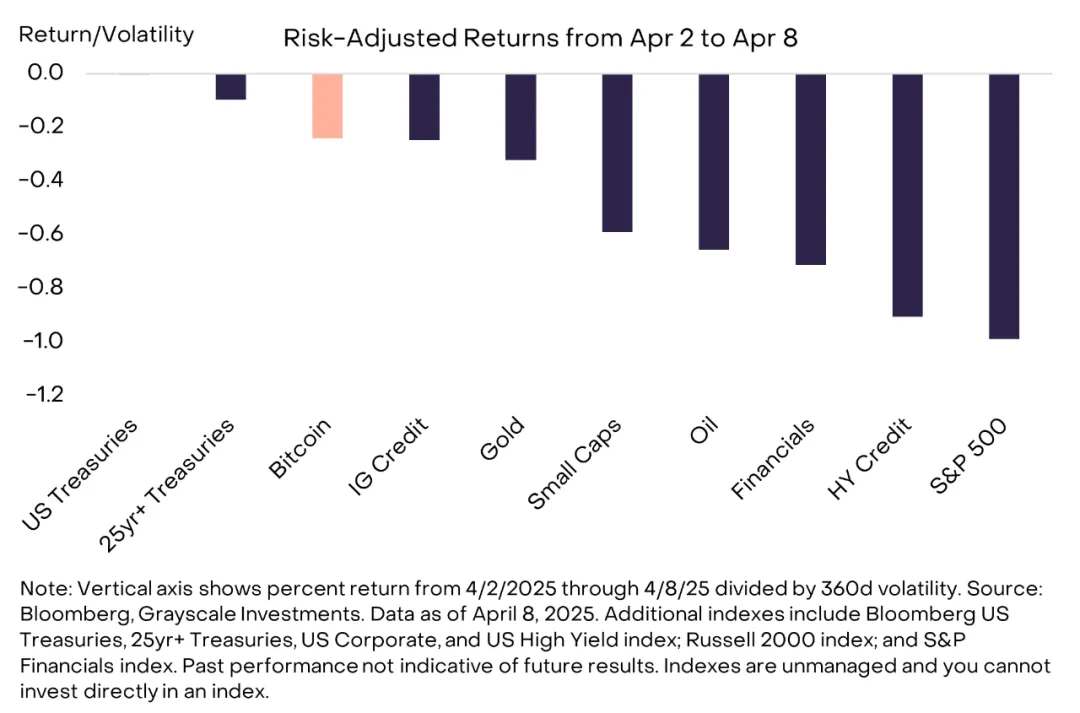
Bitcoin's price decline was relatively small when risk-adjusted
In the short term, the global market outlook may depend on trade negotiations between the White House and other countries. While negotiations may lead to lower tariffs, setbacks in negotiations could also trigger more retaliatory actions, and the actual volatility of traditional markets remains high and difficult to predict. Therefore, investors should cautiously adjust their positions in a high-risk market environment. Additionally, Bitcoin's volatility increase is far lower than that of stocks, and multiple indicators show that speculative traders in the cryptocurrency market have relatively low positions. If macro risks ease in the coming weeks, the cryptocurrency market capitalization is expected to rebound.
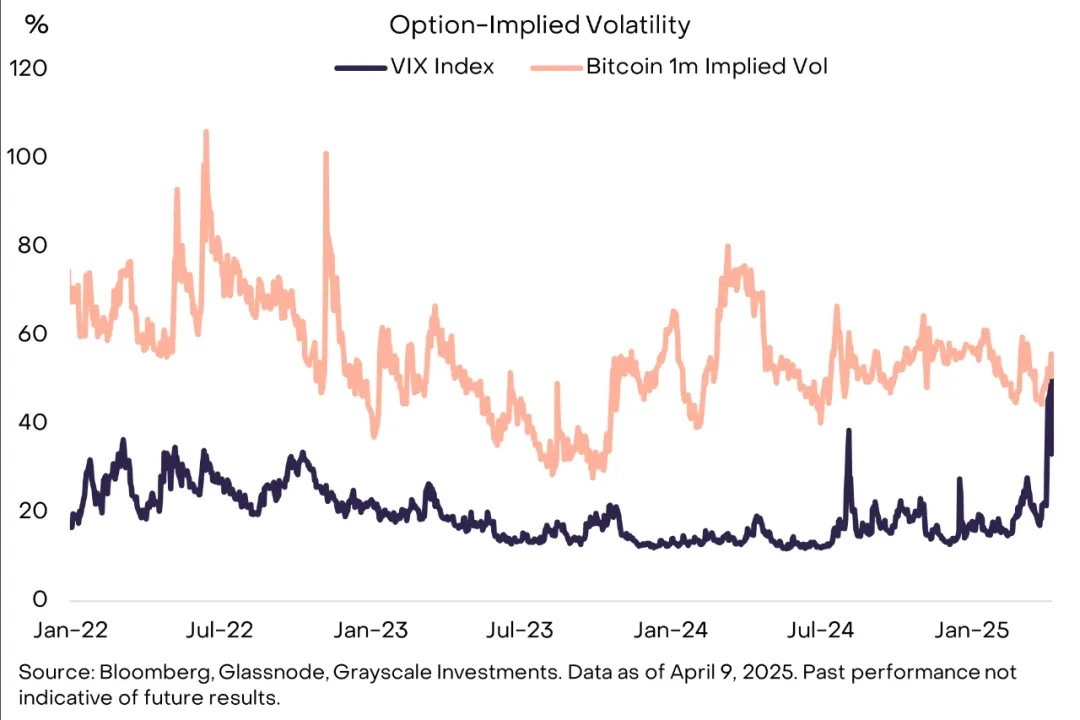
Stock implied volatility is close to Bitcoin's
Regarding Bitcoin, although its price has declined over the past week, from a longer-term perspective, the impact of higher tariffs on Bitcoin will depend on their effect on the economy and international capital flows. Tariffs (and changes in related non-tariff trade barriers) may lead to "stagflation" and potentially cause structural weakness in U.S. dollar demand. Therefore, increased tariffs and changes in global trade patterns could be positive factors for Bitcoin adoption in the medium to long term.
Asset Allocation during Stagflation
Stagflation refers to an economic state of slow/decelerating economic growth with high/accelerating inflation. Tariffs increase the prices of imported goods, thus (at least in the short term) causing inflation to rise. Simultaneously, tariffs may slow economic growth by reducing residents' real income and forcing businesses to adjust costs. In the long term, this impact may be partially offset by increased domestic manufacturing investment, and most economists expect these new tariffs to continue dragging on the economy for at least the next year.
Historically, asset returns in the 1970s vividly demonstrated the impact of stagflation on financial markets (Bitcoin emerged too recently to backtest its performance). During that decade, U.S. stocks and long-term bonds had annualized returns of around 6%, below the average inflation rate of 7.4%. In contrast, gold prices rose by about 30% annually, far exceeding the inflation rate.
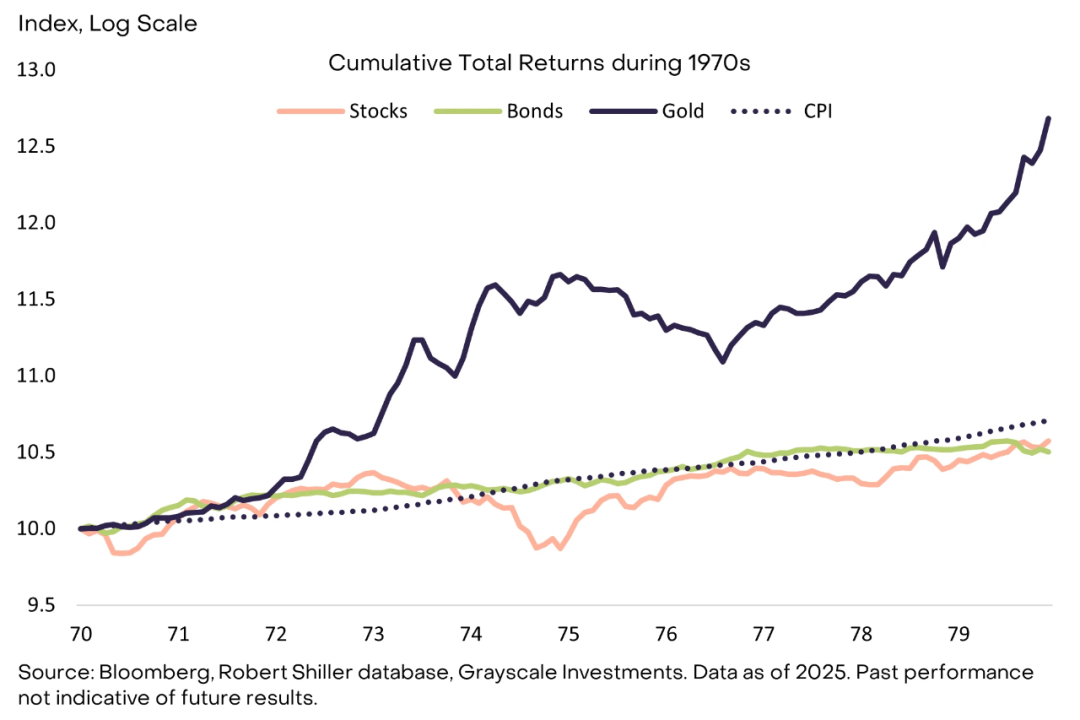
Traditional assets had negative real returns in the 1970s
Extreme stagflation scenarios are typically rare, but their impact on asset returns remains largely consistent over time. The following chart shows the average annual returns of U.S. stocks, government bonds, and gold across different economic growth and inflation cycles from 1900 to 2024.
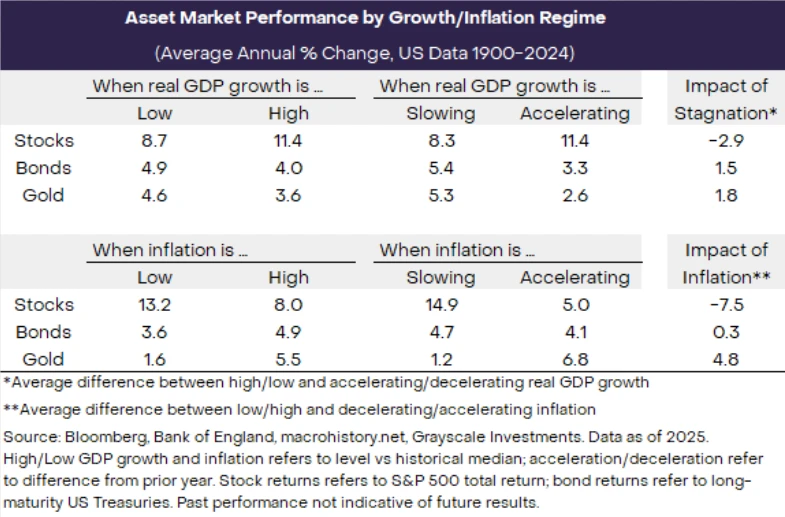
Stagflation reduces stock returns and increases gold returns
Historical data reveals three key points:
· When GDP is high or accelerating and inflation is low or decelerating, stock market returns are typically higher. Therefore, during stagflation, stock market returns are expected to fall, and investors may need to reduce equity allocations;
· When economic growth is sluggish and inflation rises, gold tends to perform well, especially during stagflation, serving as the primary inflation hedge. This suggests that gold is usually a more attractive investment in such an environment;
· Bond performance is closely tied to inflation changes. When inflation is low, bond yields are typically good, but when inflation rises, bond performance is usually poor. Therefore, bond investors may face the risk of declining returns during inflationary periods.
In summary, different assets perform differently across economic cycles, and investors should adjust asset allocation based on the macroeconomic environment. This is particularly important during stagflation, as it often negatively impacts stocks, while gold may experience growth.
Bitcoin and the U.S. Dollar
Tariffs and trade tensions may promote Bitcoin adoption in the medium term, partly due to pressure on U.S. dollar demand. Specifically, if total trade flows with the U.S. decrease, and most trade flows are denominated in dollars, the transactional demand for dollars will reduce. Moreover, if tariffs lead to conflicts with other major countries, they may weaken the dollar's demand as a store of value.
The U.S. dollar's share in global foreign exchange reserves far exceeds the U.S. share in global economic output. This situation exists for many reasons, but network effects play a crucial role: countries trade with the U.S., borrow in dollar markets, and typically price commodity exports in dollars. If trade tensions reduce connections with the U.S. economy and dollar-based financial markets, countries may accelerate foreign exchange reserve diversification.
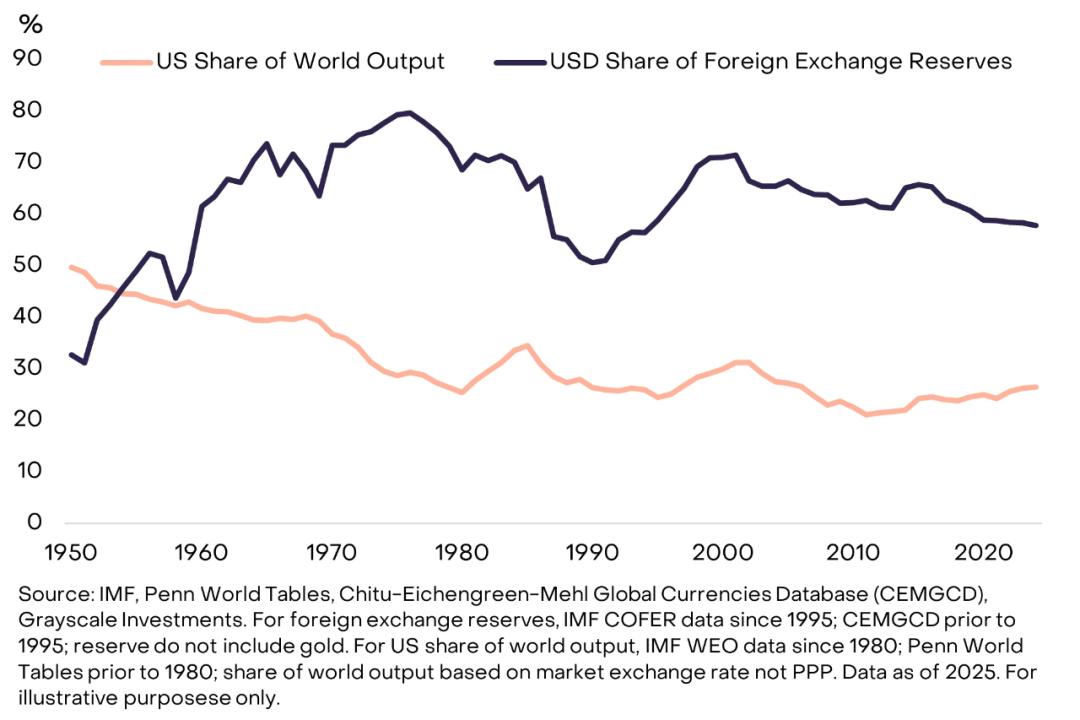
The dollar's share in global reserves far exceeds the U.S. share in the global economy
Many central banks have increased gold purchases since Russia faced Western sanctions. Currently, apart from Iran, no other country's central bank holds Bitcoin on its balance sheet. However, the Czech National Bank has begun exploring this option, the U.S. has established strategic Bitcoin reserves, and some sovereign wealth funds have publicly announced Bitcoin investments. In our view, disruptions to the dollar-centric international trade and financial system may lead central banks to further diversify reserves, including investing in Bitcoin.
Here's the English translation:The moment most similar to President Trump's "Liberation Day" declaration in US history might be the "Nixon Shock" on August 15, 1971. That evening, President Nixon announced a comprehensive 10% tariff and ended the system of dollar convertibility to gold - a system that had supported the global trade and financial system since the end of World War II. This action triggered diplomatic activities between the United States and other countries, ultimately reaching the Smithsonian Agreement in December 1971, where other countries agreed to revalue their currencies relative to the dollar. The dollar ultimately depreciated by 27% between the second quarter of 1971 and the third quarter of 1978. In the past 50 years, there have been several instances of trade tensions followed by a weakening dollar (partially negotiated).
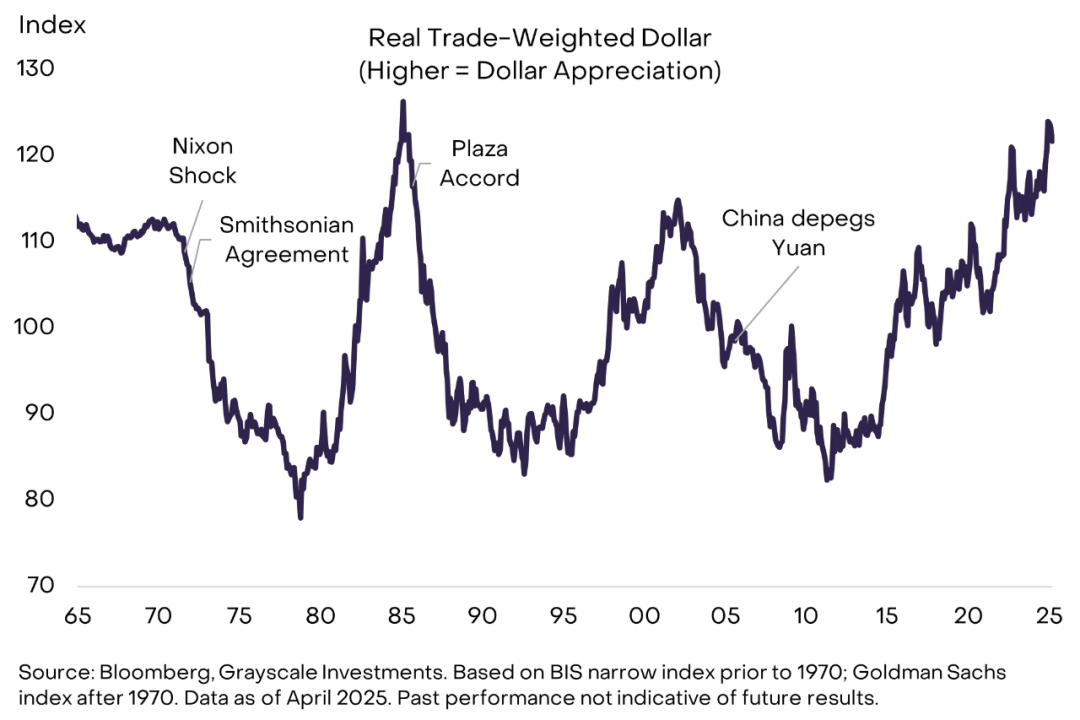
Recent trade tensions are expected to again lead to continued dollar weakness. According to relevant indicators, the US dollar is already overvalued, the Federal Reserve has room to lower interest rates, and the White House wants to reduce the US trade deficit. Although tariffs can change effective import and export prices, dollar depreciation may gradually rebalance trade flows through market mechanisms, thereby achieving the expected effect.
Child of the Era - Bitcoin
The sudden changes in US trade policy are causing adjustments in financial markets, which will have short-term negative economic impacts. However, the market conditions of the past week are unlikely to be the norm for the next four years. The Trump administration is implementing a series of policy measures that will have different impacts on GDP growth, inflation, and trade deficits. For example, while tariffs might reduce economic growth and increase inflation (causing stagflation), certain types of deregulation might increase growth and lower inflation (reducing stagflation), with the final result depending on the extent to which the White House implements its policy agenda in these areas.
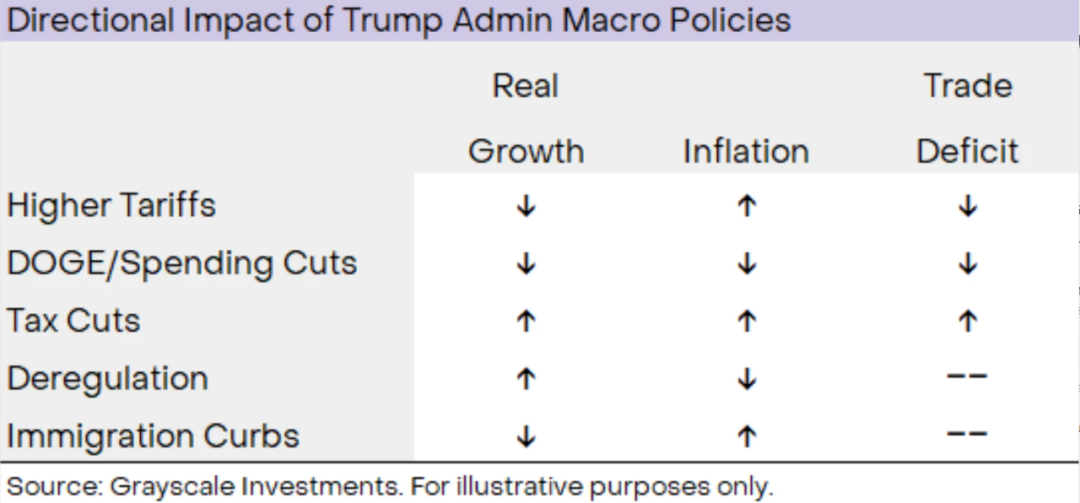
US macroeconomic policies will have a range of impacts on growth and inflation
Despite the uncertain prospects, the best guess is that US government policies will lead to continued dollar weakness and overall inflation above the target within the next 1 to 3 years. Tariffs themselves might slow growth, but this impact could be partially offset by tax cuts, deregulation, and dollar depreciation. If the White House also actively pursues other growth-promoting policies, GDP growth could remain relatively good despite the initial tariff impact. Regardless of actual growth, historical evidence suggests that sustained inflationary pressures over a period might be favorable for scarce commodities like Bitcoin and gold.
Moreover, just like gold in the 1970s, Bitcoin now has a rapidly improving market structure - supported by changes in US government policies. This year, the White House has implemented a series of broad policy changes that should support investment in the digital asset industry, including withdrawing a series of lawsuits, ensuring asset applicability to traditional commercial banks, and allowing regulated institutions (such as custodians) to provide cryptocurrency services. This, in turn, has triggered a wave of mergers and acquisitions and other strategic investments. New tariffs are a short-term negative factor for Bitcoin's valuation, but the Trump administration's cryptocurrency-specific policies have consistently supported the industry. Overall, the increased macro-economic demand for scarce commodity assets and the improved investor operating environment could be a powerful combination for widespread Bitcoin adoption in the coming years.






